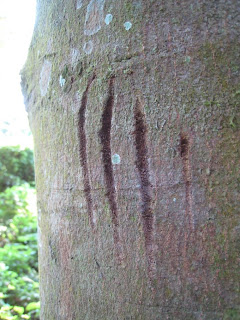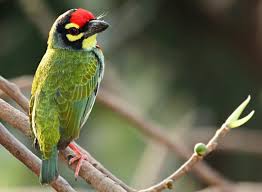How often have you heard people returning from National Parks complaining that they saw nothing?
Nothing!
Really?
Well…that doesn’t say much for the National Park but certainly says much about the visitor!
If you’d like to help ensure that your child does not leave a forest with that empty feeling, follow these tips and you will see that it is impossible to visit a National Park and leave disappointed. For there is always plenty to see!
A shrill alarm call reverberated through the thick jungle, becoming more frequent with every passing minute. The Langurs on the tree tops soon joined in with their cackle. We froze and waited. Waited and watched. Surely the big cat was not far away.
A thrilling experience it is surely in the Indian Jungle to wait and watch, watch and wait. For the drama to unfold.
Almost like a mystery novel where the detective pieces together the clues to find the thief. Putting together the puzzle is as exciting as the end result.
Allow yourself and your child to experience the thrill.
The jungle is bursting with dozens of signs and hidden messages. If only we could keep our eyes and ears open, we could walk away with a thrilling experience each time we visit a National Park, regardless of whether we spotted a big mammal or not.
Here are some common signs and messages you could watch out for and point out to your child –
- Scratch marks on trees. What could that be?
Sloth Bears leave deep claw marks on trees which are easily visible on the bark. They are good climbers and climb onto trees searching for honey. As they slide back down, their claws tend to leave scratch marks on the trees.
Animals leave various marks to mark their territory. Deer rub their antlers on tree trunks to peel off their outer sheath, leaving a patch on the trunk. Porcupines sometimes gnaw at the bark of certain trees, leaving a mark on the tree base.
Encourage your child to notice these signs and ask the guide to tell you more.

- Pug marks on the Ground. Whose are they?
One of the surest ways of tracking animals is by noting their pug marks, which are easily visible on the soft ground. Look up pictures of pug marks of tigers, leopards, gaurs, deer etc before you go.
Get the broad picture first. Pug marks of the dog family would have nail marks whereas those belonging to the cat family would not. Mongoose leave an impression of five toes in the ground as against four toes of a cat.
Ask your child to keep a lookout for these in the jungle and see how many he/she can spot and identify. Pug marks can vary depending on the size of the feet, the condition of the ground, the weather etc. Ask your Guide to point these out to you.

- Droppings on the Ground. Whose are they?
A forest guard can tell which animal has passed that way by examining the droppings (also called scats) on the ground.
Tigers and leopard scats are usually found with scrape marks left by their hind legs.
Rhinos always return to the same spot to do their morning job and their dung is found piled up in one place.
Droppings of barking deer and rabbits are often found littered on the forest floor. Make it a point to tell your guide that you are not interested only in Tigers but also want to know more about these signs.
- What is that incessant metallic sound?
Early in the morning and during the late evening, the forest reverberates with the call of birds. It is possible to identify a bird by its call.
A repetitive metallic sound is that of Coppersmith Barbet.
A slow drumming sound could be a Woodpecker chiselling dead wood to make a nest.
You can train your child to first listen to the various calls and try and identify the bird with help from your guide. Children are often great mimics and enjoy imitating bird calls too.

- I see Track Marks. Who’s been here?
Snakes move in a zig-zag manner or in a straight line, leaving a particular pattern on the ground in the form of a small furrow. Look out for them as you drive around your safari.
Pythons move in a straight line. Some other snakes in a wavy line. Some move in a longer side-winding serpentine way.
Snake Tracks can be interesting. Ask your guide to point them out. And who knows? If you’re lucky…you might spot the reptile sunning away on a barren rock or open space some distance away!

- I see something under that Tree. What does that indicate?
If you find white droppings below a tree, it is probably a roosting site for a bird.
Round Pellets under a tree could be food regurgitated by Owls, who have the habit of throwing up inedible portions of their prey such as feathers and hair.
Half-eaten fruits or leaves under the tree indicate that langurs have visited the tree not too long ago (deer and other animals would have consumed the half-eaten fruits had it been very long ago).

The Jungle is bursting with several sights and sounds. Many signs and signals. It is important that you hone your child’s skills to enjoy the wild before you take them for long safaris that can be very taxing and tiring. To read more about how you can get your child to enjoy Nature Walks, click here.
Teach your child to look out for and interpret these vital signs and messages of the Jungle.
I can assure you then that no outing to the National Park will ever be a dull experience. Whether you see the Tiger or you Don’t!
Related Posts

Trackbacks and Pingbacks